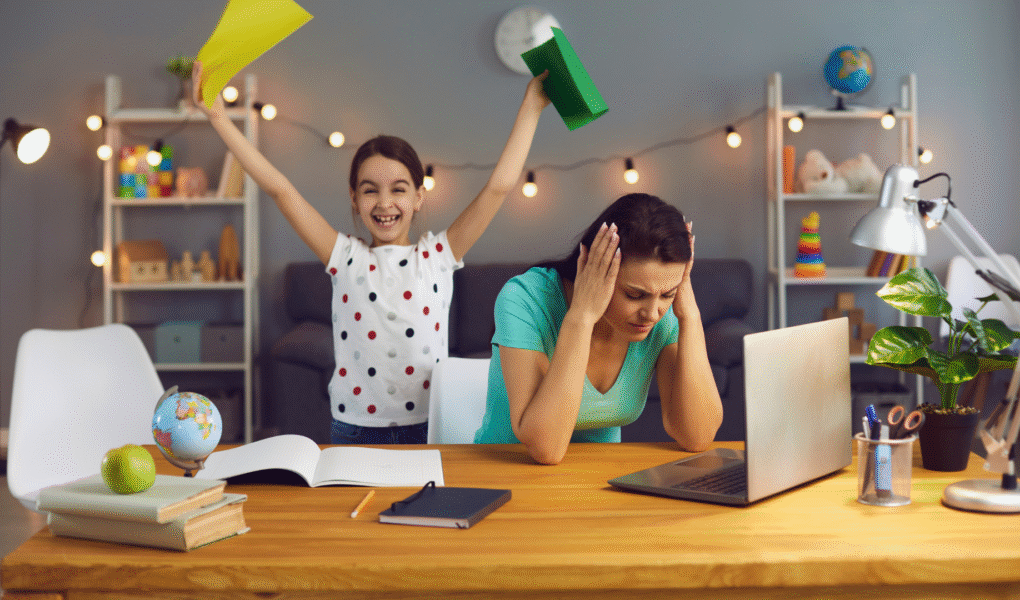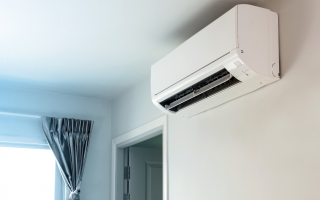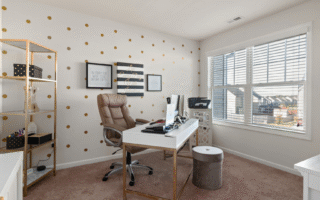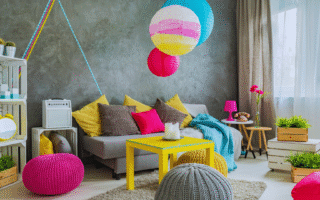A cluttered home can lead to a cluttered mind, making it challenging to relax and enjoy personal space. Effective decluttering not only improves the physical environment but also enhances mental clarity. By implementing easy organizing tips, anyone can transform their living areas into serene, functional spaces.
The journey to a tidy home begins with understanding the importance of decluttering. Each item should serve a purpose or bring joy. Creating simple systems for assessment and organization enables individuals to create lasting habits that keep clutter at bay.
Incorporating small, manageable actions into daily routines can yield significant results. With the right approach, decluttering becomes less of a daunting task and more of a fulfilling endeavor that leads to a more organized, peaceful living environment.
Understanding the Benefits of Decluttering
Decluttering offers numerous advantages that enhance daily living. A decluttered home can significantly impact mental well-being, productivity, and time management.
How Decluttering Improves Mental Health
A tidy environment positively influences mental health. A cluttered space can lead to feelings of anxiety and overwhelm. In contrast, simplifying surroundings can foster a sense of control and calm.
Research indicates that minimizing physical clutter can alleviate mental load. Decluttering presents opportunities for personal reflection, enabling individuals to prioritize what truly matters. The act itself becomes therapeutic, allowing people to express their values by choosing what to keep.
Increase Productivity and Reduce Stress
Productivity often suffers in chaotic environments. When distractions abound, focus diminishes. By removing unnecessary items, individuals can create spaces more conducive to work and creativity.
Organizing materials and categorizing belongings allows for efficient access. This streamlined environment helps reduce the stress associated with searching for misplaced items. With fewer distractions, one can concentrate better, leading to enhanced performance in both personal and professional tasks.
Save Time With an Organized Home
An organized home translates to significant time savings. When everything has a designated place, locating items becomes quick and effortless. This efficiency drastically reduces the time spent on mundane tasks.
A simple inventory system can further augment this benefit. For instance, cataloging seasonal items makes rotation easier. By investing time in organizing their homes upfront, individuals find they can navigate their homes with speed, allowing more time for enjoyable activities.
Getting Started: Planning Your Decluttering Project
Planning a decluttering project requires a clear approach to achieve sustainable results. It involves setting realistic goals, understanding the step-by-step process, and creating a timeline for execution. Focusing on one room at a time simplifies the task and makes it less overwhelming.
Setting Realistic Decluttering Goals
Effective decluttering begins with realistic goals. It is essential to identify what she wants to achieve, whether it’s creating more space, reducing clutter, or enhancing organization. Goals should be specific, such as “clear out the closet” or “reduce kitchen items by 30%.”
Breaking larger goals into smaller, manageable tasks can enhance motivation. For example, in a bedroom, she can set a goal to tackle one drawer at a time. This step-by-step approach helps maintain momentum throughout the project.
The Decluttering Process Step-By-Step
The decluttering process involves several key steps. First, she should gather necessary supplies, such as boxes for sorting items:
- Keep: Items used regularly.
- Donate: Items in good condition but no longer needed.
- Discard: Broken or unusable items.
Next, she should evaluate each room’s contents, making decisions quickly to avoid second-guessing. It’s important to remember that some items may hold sentimental value, so she should be mindful while assessing their necessity.
Finally, implementing a temporary holding area for undecided items can provide clarity. After a time, she can reassess those items with a fresher perspective.
Creating a Decluttering Timeline
Establishing a decluttering timeline aids in maintaining focus and commitment. She should begin by deciding how much time to allocate each week for the project. For those with busy schedules, setting aside just one hour per week can still yield significant results over time. When decluttering generates bulky waste or renovation debris, consider hiring a local garbage bin rental company to handle timely removal and keep the project on schedule.
Creating a visual timeline on a wall calendar helps track progress. It can serve as a reminder and motivator to complete tasks. The timeline should be flexible enough to accommodate unexpected delays but structured enough to foster a sense of urgency.
Small Steps: Focus on One Room at a Time
Concentrating on one room at a time simplifies the decluttering process. It allows for a deeper and more effective sorting of items. Choosing the most cluttered space first can provide immediate satisfaction and motivation.
Each room should be approached methodically, starting with areas like closets or garages that often accumulate unnecessary items. By addressing small spaces, such as a drawer or shelf, she can gradually build confidence and see tangible progress.
Establishing a clear plan for each room makes it easier to develop organization systems tailored to specific needs. This targeted method prevents overwhelm and encourages consistency throughout the decluttering project.
Easy Decluttering Tips for Every Room
Decluttering can transform any space, making it more functional and enjoyable. Each room in a home has specific needs and challenges. Implementing targeted strategies can lead to an effective organization.
Declutter Your Kitchen: Expired Products and Storage Solutions
Start with a thorough inspection of your kitchen. Check pantry items for expired products, including spices and canned goods. Dispose of anything that is no longer good to avoid clutter. Next, enhance your storage solutions. Use clear containers for easy visibility of ingredients. Label shelves and jars for quick identification. Install stackable shelves or use drawer dividers to maximize space.
Finally, keep items used frequently within reach. Store rarely used appliances in cabinets to free up counter space. Regularly revisit these tips to maintain an organized kitchen.
Declutter Your Bedroom: Closet Organization
The bedroom often collects items that are no longer needed. Start by tackling the closet: remove all clothing and evaluate each piece. Donate or discard anything that is no longer worn. Use uniform hangers for a tidy appearance, and for suits and jackets, consider investing in the Best suit hangers to maintain shape, prevent creases, and keep your wardrobe looking polished. Fold and stack other items neatly on shelves, prioritizing easy access, and use storage bins for seasonal clothing.
Label bins to maintain organization and streamline the selection process. Establish a one-in-one-out rule to prevent future clutter. These strategies create a calm and functional bedroom environment.
Declutter Your Living Room: Managing Household Clutter
The living room can quickly fill with household clutter. Start by removing items that do not belong in this space. Gather stray items and place them in designated bins. Implement functional storage solutions such as coffee tables with shelves or ottomans that double as storage. Use baskets for magazines and remote controls to keep surfaces tidy.
Establish a routine to limit clutter build-up. A quick evening tidy can maintain the room’s organization. Keep personal items and decor minimal for a clearer and more spacious atmosphere.
If the living room still feels crowded after those steps, consider moving less-used items out of the way temporarily to create breathing room. Short-term off-site options can free floor space while keeping belongings accessible—many facilities offer a range of unit sizes and flexible access hours that fit renovation and daily schedules.
Search for keywords like “recommended storage units near me” to find companies that can help store seasonal décor, extra furniture, or items you don’t want to discard. This allows to keep cherished belongings safe while freeing up space in the home during renovations or other projects.
Declutter Your Bathroom: Organizing Essentials
Bathrooms often harbor unused products. Start by auditing personal care items and disposing of expired products. This includes cosmetics, medications, and toiletries. Organize remaining items using drawer organizers or small bins. A tiered shelf can maximize vertical space for easier access. Label containers to identify contents quickly.
Group similar items together, such as hair care or skincare products. Limit the number of products on countertops to create an open and inviting space. Regularly revisiting these practices will keep the bathroom clutter-free.
Practical Strategies to Stay Organized and Clutter-Free
Staying organized requires practical strategies that effectively manage physical space and personal items. Implementing specific techniques can significantly reduce clutter and maintain a clean environment. Below are key methods that emphasize efficiency in an organization.
Using Drawer Dividers and Organizers
Drawer dividers and organizers are essential tools for maximizing storage space. By categorizing items within drawers, they help individuals quickly access belongings while minimizing chaos. For example, kitchen tools can be separated from stationery items, preventing overlap.
Types of Organizers:
- Plastic Dividers: Durable and easy to clean.
- Fabric Bins: Soft and flexible, suitable for delicate items.
- Custom Inserts: Tailored to fit specific drawers, ensuring a perfect fit.
Using dividers allows for easy visibility of contents. This organization method helps individuals maintain a clear mental space, reducing the chance of clutter build-up.
Managing Paper Clutter and Drop Zones
Paper clutter often accumulates in homes, creating unnecessary disorder. Establishing designated drop zones can effectively manage incoming papers. These zones serve as temporary holding areas for documents like bills, notices, and receipts.
Strategies to Control Paper Clutter:
- Daily Sorting: Take a few minutes each day to go through new papers.
- Shred and Recycle: Regularly shred sensitive documents and recycle what is not needed.
- Digital Solutions: Scan important documents to minimize physical copies.
This proactive approach ensures that paper clutter does not overwhelm the home. It allows individuals to maintain a manageable system for documents and important papers.
Donation, Recycling, and Proper Disposal
Proper disposal and recycling play vital roles in maintaining a clutter-free space. Encouraging regular donations and recycling helps individuals part with items that no longer serve a purpose. This promotes sustainability and community support.
Best Practices:
- Donation Centers: Identify local charities that accept gently used items.
- Recycling Programs: Know local recycling rules for materials like plastics and paper.
- Clear-out Days: Schedule specific days to reevaluate possessions and decide what to discard.
Implementing these practices not only clears space but also provides opportunities for others in need.
Dealing With Sentimental Items and Gifts
Sentimental items can be challenging to manage, often leading to clutter. Establishing criteria for keeping these items can help maintain balance. It’s crucial to assess the emotional value versus the physical space they occupy.
When certain sentimental belongings are not used daily but still hold significance, and space at home is limited, a local self-storage facility can serve as a practical solution. Such spaces provide a safe and secure environment where treasured possessions can be preserved without adding to household crowding, ensuring that memories remain intact while everyday living areas stay comfortable and uncluttered.
Here are Few Tips for Handling Sentimental Items:
- Limit Storage: Designate a specific box for sentimental items.
- Memory Photography: Take photos of items before donating or discarding them.
- Gifts with Purpose: Evaluate the importance and use of gifts received; let go of those that don’t serve a practical purpose.
Through mindful consideration, individuals can enjoy memories while preventing overcrowding in their living spaces.




